Granary: Sticky Rice and He Granaries in Guizhou
What is he, and why does it hold a special place in people’s heart in Guizhou’s minority communities.
Written by Chaoxiong Zhang
Published on 03/08/2021
What do granaries look like? Nowadays, many places have built modern mechanized granaries such as large steel and concrete grain silos which can store thousands of tons of grains (Fig. 1). These mechanized granaries are often equipped with intelligent monitoring systems to measure and adjust temperature and moisture. These large granaries are mainly for large-scale grain storage and further processing. However, in rural areas, farmers themselves still need to build their household granaries to secure their everyday life. In China’s southwestern Guizhou province (Fig. 2), both houses and granaries were made of wood or bamboo in the past. Nowadays, although many villagers rebuild concrete or brick houses for living instead, many of them still keep their granaries in the “traditional” form as the construction allows better preservation of grains.
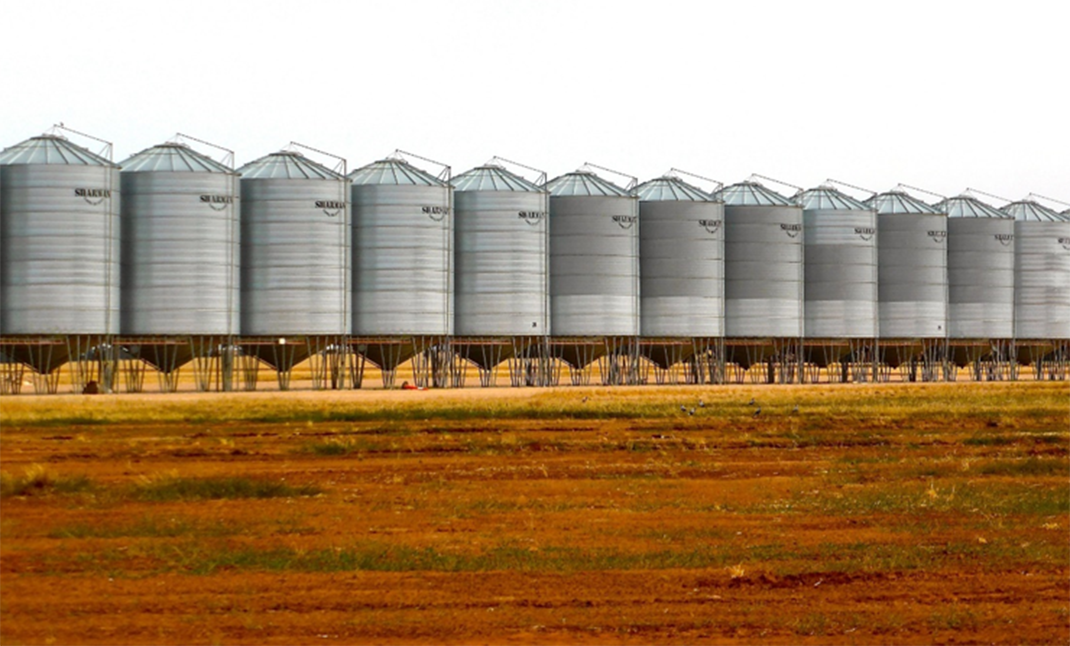
Physical Construction & Major Functions
Preventing Dampness:
The design and construction of granaries are largely shaped by the local natural environment. Guizhou has a humid subtropical climate, so preventing dampness is crucial to food storage. As mentioned, he granaries often adopt a ganlan style (干栏 or 干阑, “stilted” style) which are raised on pillars. This style of architecture is common in Southwest China and Southeast Asia where the weather is humid (Fig. 3). In Guizhou, the pilings of the granaries are often made of pinewood or Chinese fir. The materials and structures of the main body of the granary vary among different ethnic groups. In Dong (侗) and Miao (苗) areas, for example, storehouses are often made of wood. Granaries in Yao (瑶) area are built in a cylindrical shape with woven bamboo wall and a conic shaped thatched roof. The primary function of such a design is to shield against the rain but at the same time facilitate airflow.
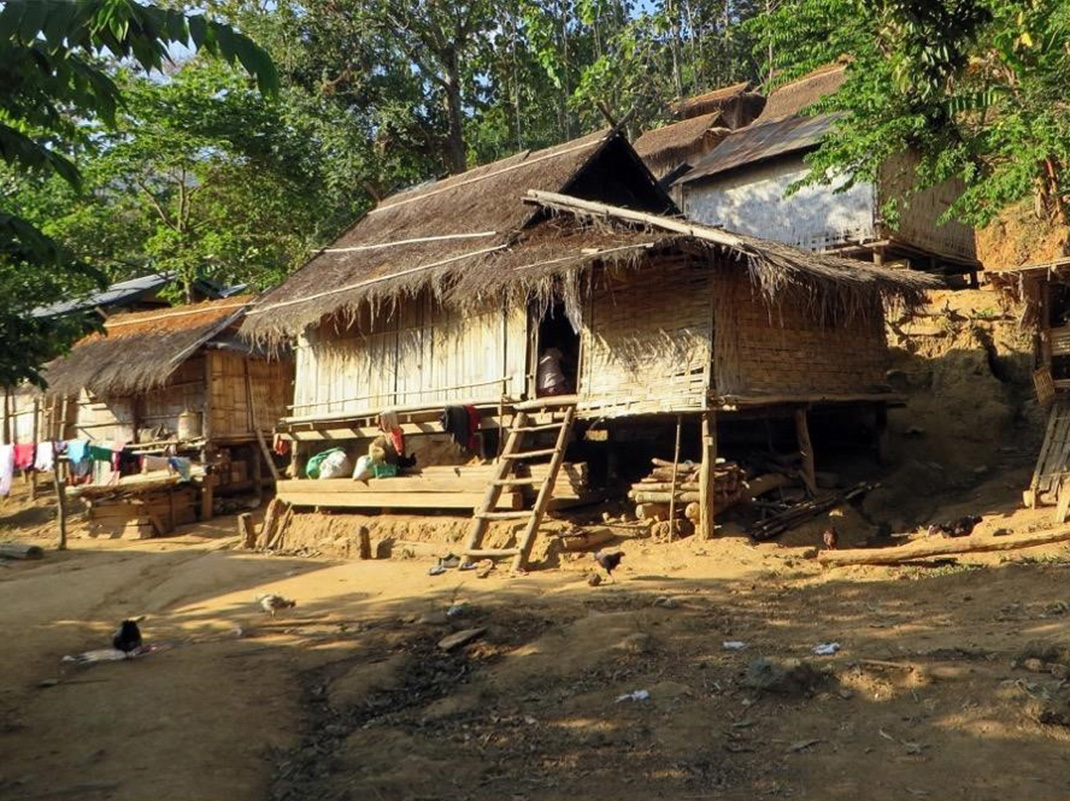
Fire Prevention:
As granaries are made of wood or bamboo, fire prevention is another important concern of farmers. Villagers often build their granaries together right outside their main living area to keep a certain distance from sources of flames. In addition, many granaries are built directly upon fishponds (Fig. 4). Such a design connects to another everyday technology of land use in Guizhou: the rice-fish-duck symbiotic system which cultivates fish, duck, and rice at the same time in rice paddles (Fig. 5). Farmers rear fish seeds in the tank below the granaries and later move the fish fry to paddies after rice transplantation. In this integrated agri-aquaculture ecosystem, fish and duck can enhance water flow and reduce pest and weed, and the excretion of fish and duck can also be natural fertilizer for rice. The Food and Agriculture Organization of the United Nations have listed Guizhou Dong’s rice-fish-duck system as a GIAHS (Globally Important Agricultural Heritage System) in 2011.

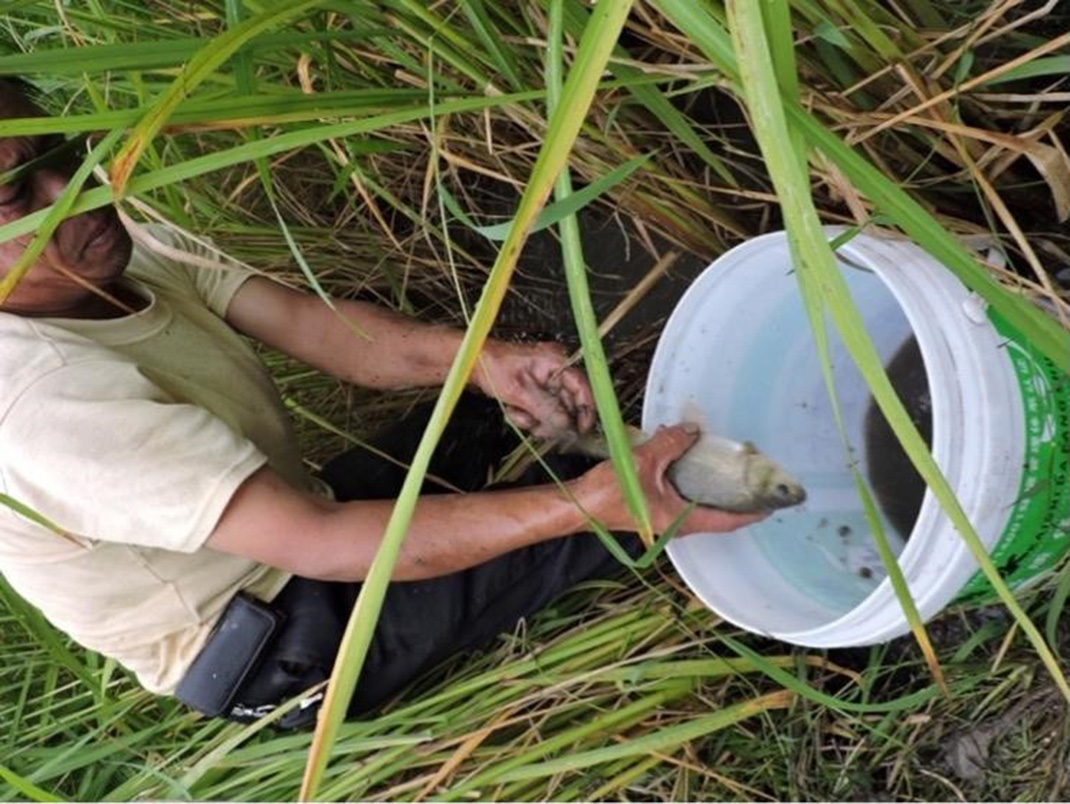
Rat Prevention:
Fish tanks below the granaries also help to stop another main enemy of stored grain: rats. Besides the tanks, there are also other features designed to prevent rats. For example, in Yao villages, there is a kind of he granary called tanjiao cang (罈腳倉, jar-footed granary) with ceramic jars covering the four wood pillars (Fig. 6). These specially made jars wear slippery ceramic glaze to stop rats from running along pilings. Smooth stone, wood discs or iron sheet are also used in some areas for rat prevention (Fig. 7).
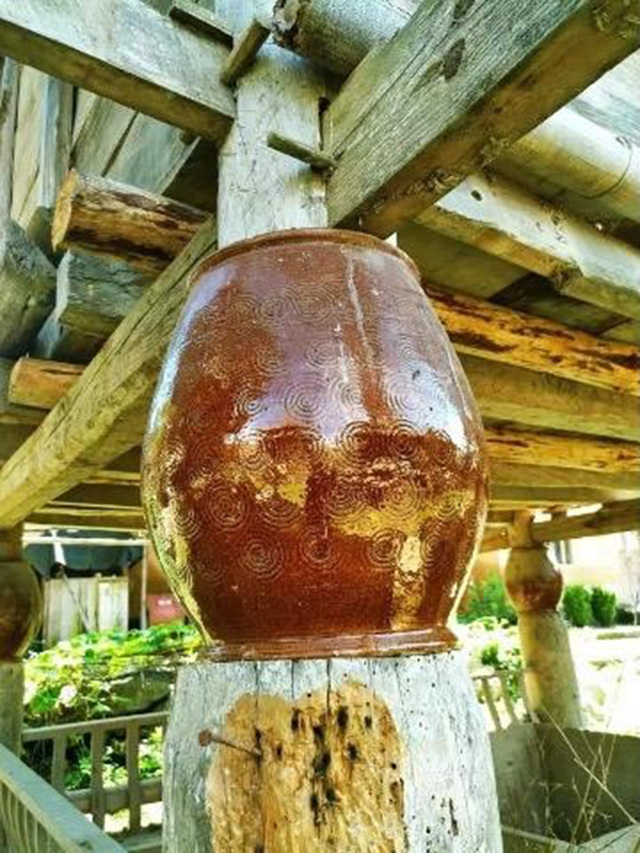
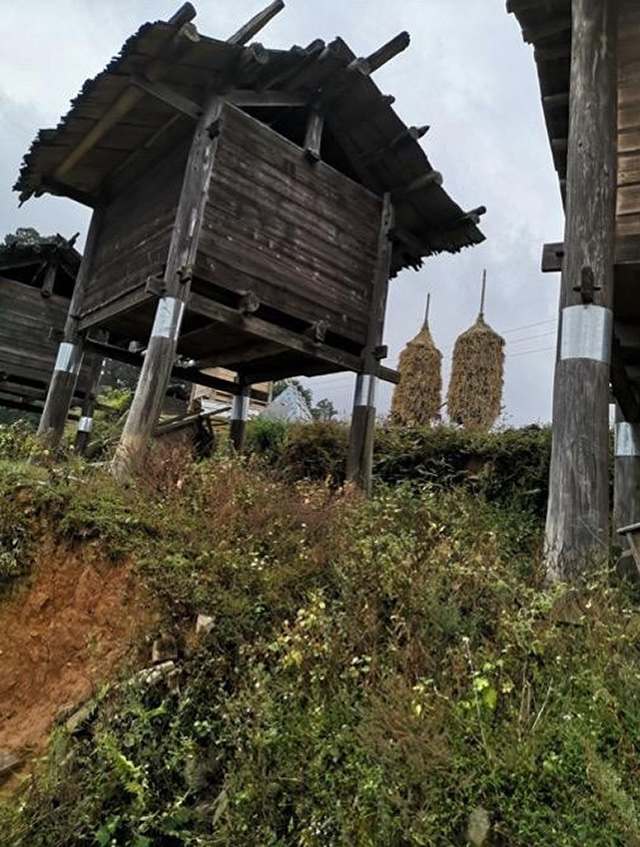
Theft Prevention:
The design of he granary also takes anti-theft function into consideration. To open the door of the storehouse, people have to use heavy objects to strike the door latch. When somebody opens the door, the whole village might hear the sound. People are not allowed to enter the granaries during night time. Besides, a set of social norms were developed to punish thieves. For example, if a person is found stealing other people’s grains, other villagers would request him/her to bring a certain amount of grains, meat, and wine to all other villagers’ homes and granaries and make a public apology.
He and Special Features Designed for He Harvest
In Southwest China’s Guizhou province, granaries are known as he cang (禾倉). In Chinese, granary is often called liang cang (糧倉). Both he and liang could mean grains or cereals. However, in Guizhou, he often refers to a particular category of grains. He is not a biological category according to the current taxonomy. Instead, he generally means glutinous rice (sticky rice, nuo 糯), or those that have to be harvested through two special processes: zhai he (摘禾) and he liang (禾晾).[1] As he is hard to be threshed, these two processes are essential. During the harvest, farmers cut the he ears one by one with a special tool called zhai he knife (摘禾刀) (Fig. 8, Fig. 9, Fig. 10). This purpose-built tool has a half-moon-shaped blade which is designed to cut individual he ear. The procedure of he liang (hanging out and dying he) is also required. During he liang, grain ears are bundled up and hung on he liang shelves (禾晾架) (Fig. 11, Fig. 12). After drying the ears in the sun for about 20-30 days, he ears would be stored in granaries. Farmers do not thresh and dehull the grains until the time of cooking.
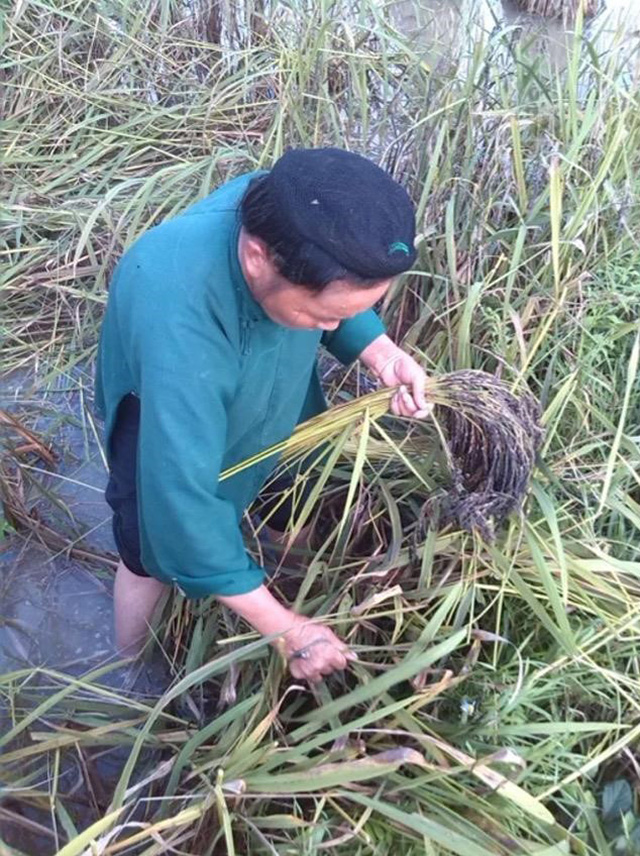
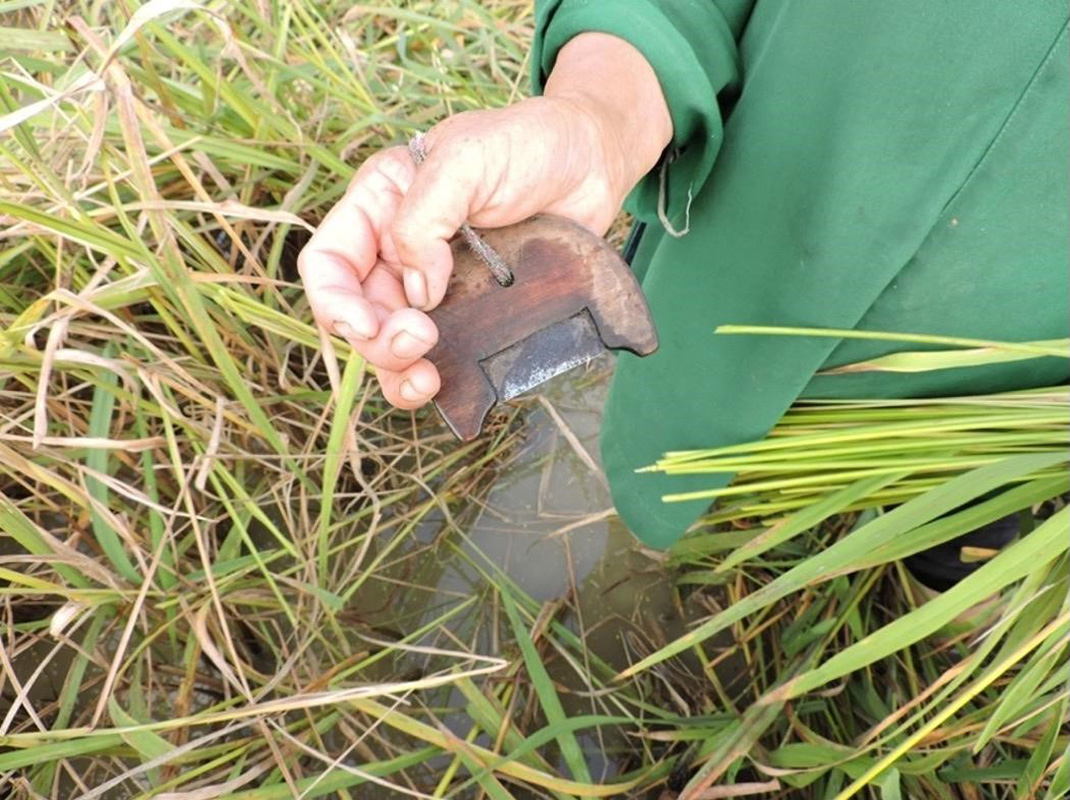
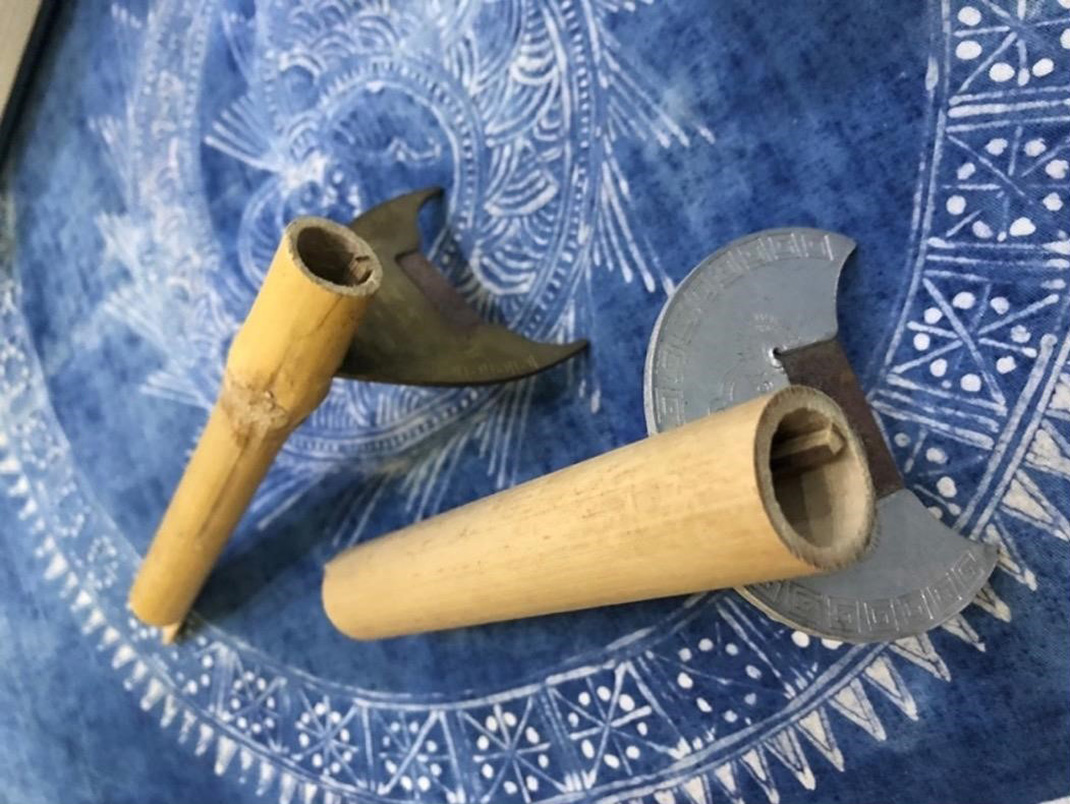
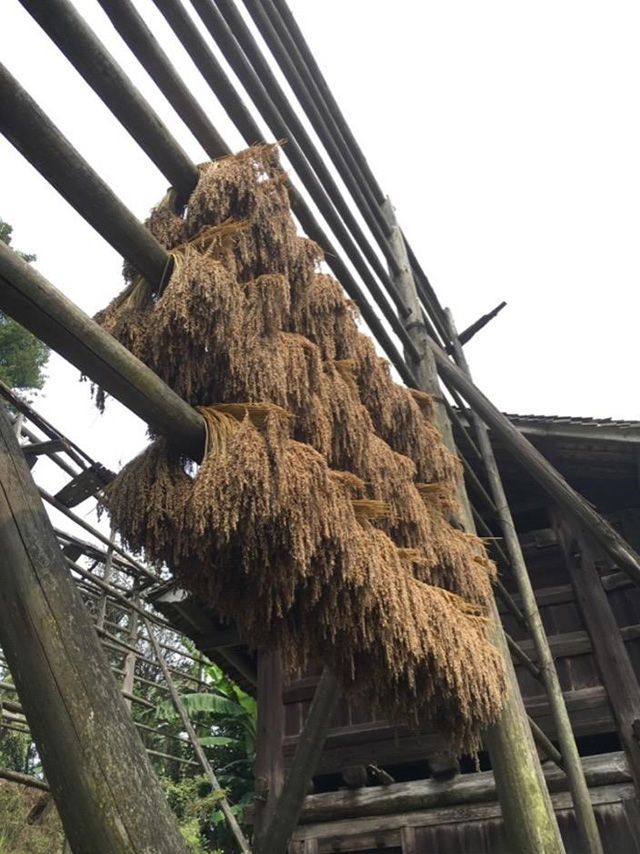
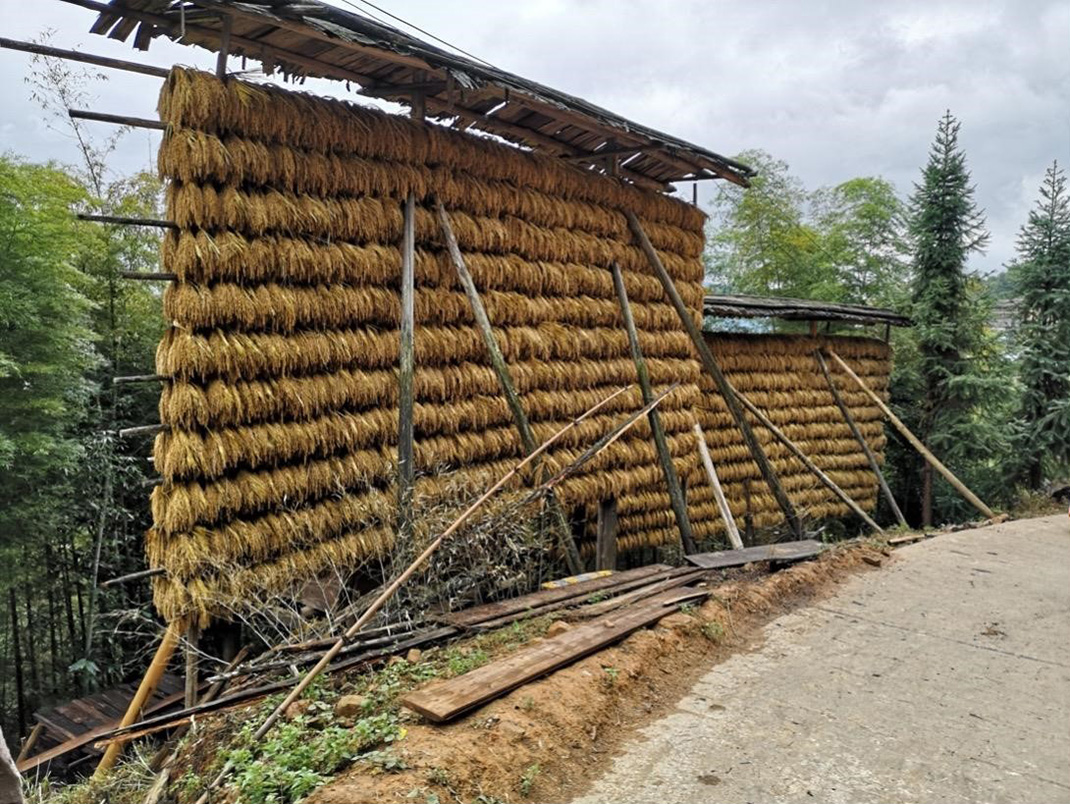
The Importance of He
He holds great ritual significance and has important symbolic meanings in many ethnic groups in Guizhou. It is used in various rites of passage such as birth, wedding, and funerals, as well as in many other ritual occasions, for example, fortune telling, expelling ghost and communicating with ancestors. Therefore, the way to harvest, dry, and store he within the ears is not only because of the difficulties of threshing, but also because farmers need to make sure the he seeds do not mix up with other kinds of grains to keep its “purity”. In some areas, only he can be stored in granaries in order to prevent “contamination” from other grains.
The variety of he seeds is another major concern of farmers. Guizhou is located in Southwest China and is a part of South China Karst, a UNESCO World Heritage Site since 2007. Karst is a special type of landscape formed by the dissolution of soluble rocks and is often characterized by rocky and barren ground. In China, Guizhou is the only province with no plain. The Karst hills landscape (Fig. 13) places severe constraints on large-scale agriculture but enables rich biodiversity. In Guizhou’s Qiandongnan Miao and Dong Autonomous Prefecture (黔東南苗族侗族自治州), the center of the he culture in Guizhou, there are more than 250 different varieties of he. During harvest and storage, farmers carefully separate different kinds of he seeds to ensure they are not mixed up with each other. He seeds are important gifts for exchange and thus crucial for building connections between local communities and forming regional alliances.[2] Therefore, even if a farmer owns a variety of he that does not suit to his/her own land, he or she would preserve the seeds in case people from other places find this variety useful.
The medical value of he for both domestic animals and human is also recognized among many local groups. For example, when cows suffered from difficult calving, villagers would feed cows with he. In Shui (水族) area, when the newborns get neonatal jaundice, their parents would use a special kind of black he soaked water to wipe their children’s oral cavity. The roots of he plant are also used to treat many diseases such as to clear deficient heat.
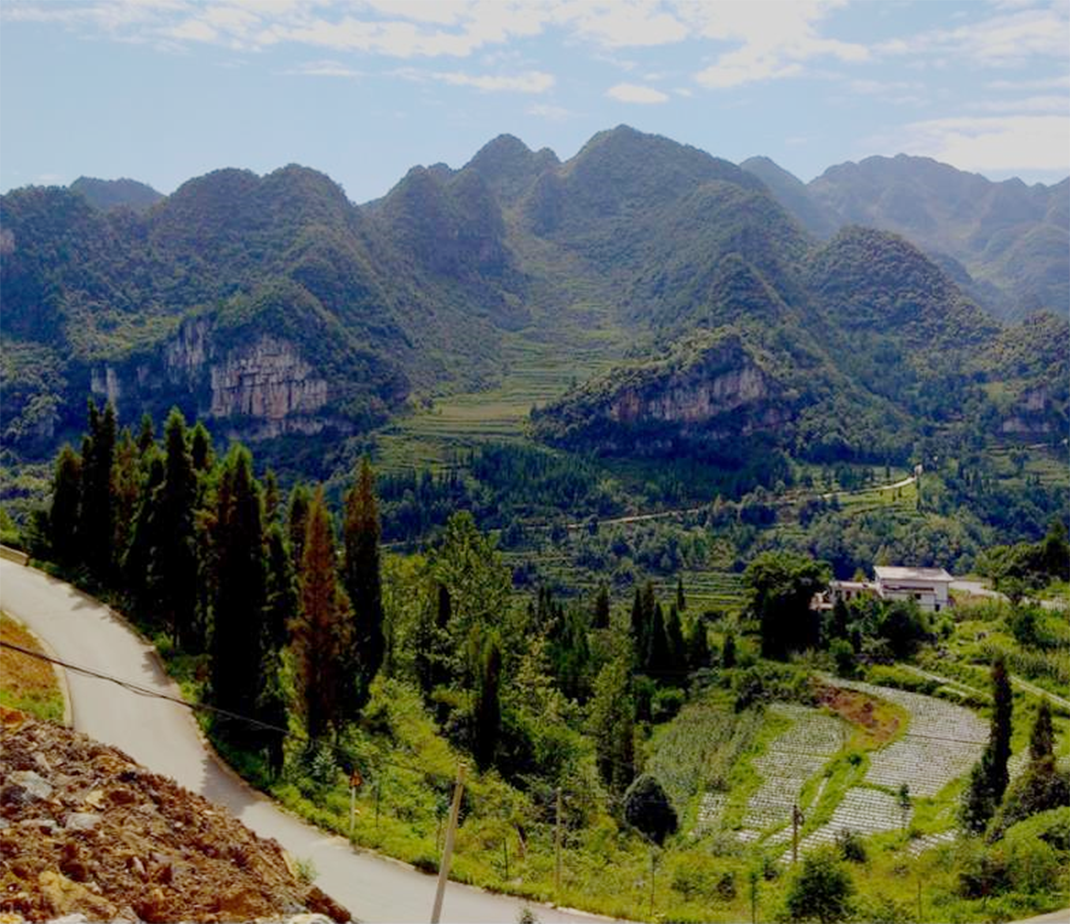
He and He Granaries: Past and Future
The changes of the design and construction of he granaries are also in relation to the history of governance in Southwest China. Since Qing dynasty, successive governments have started to promote high-yielding non-glutinous rice varieties, xian (籼). The process of nuo-to-xian or he-to-xian (糯改籼, or 禾改籼) involves three periods.[3] The first phase was during gaitu guiliu (改土歸流, integrating chieftain into official administration) in the Qing dynasty (1644-1912): Han people migrated to Southwest China and brought population pressure as well as the seeds and the culture of xian rice. The second stage was during Republican China (1912-1949): the Republican government continued to promote he-to-xian by providing subsidy and setting he price restriction. The largest-scale he-to-xian occurred during the People’s Republic of China (1949- ), especially during the Great Leap Forward (1958-1960). During this period, to increase crop yields was not only a response to population growth but also a strict political goal. Planting he was not even allowed in some areas. Later in the 1980s, the Chinese government put intensive efforts into promoting hybrid rice. Both he production and diversity dropped dramatically after the three phases of he-to-xian transition.[4]
As xian rice does not need to be dried in the sun for a long time, and can simply be threshed by machines, he liang shelves have been integrated into the main granaries or totally abandoned in many villages (Fig. 14). Also, as seeds from hybrid rice cannot be saved for re-planting, these grains lost the function as seeds and he granaries have also lost many of their social and cultural functions. Indeed, as hybrid rice growing requires chemical fertilizers and pesticides, farmers could no longer integrate rice farming into the rice-fish-duck system. Therefore, the tanks below granaries used for fry nurturing also lost this function.
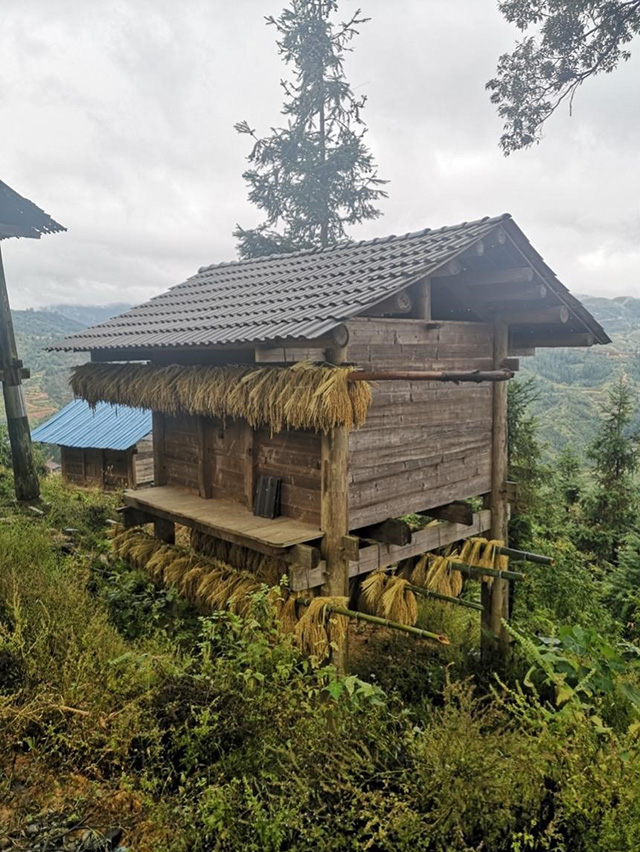
In recent years, the Chinese government has relaxed the policy on hybrid rice growing. Farmers can decide what kind of crops they want to plant. Thus, we observed a revival of he planation, along with the rebuilding of he granaries and he liang shelves in some places. Such a revival also increasingly links to many people’s increasing awareness of their ethnic identity and the development of cultural tourism. But on the other hand, as many villagers leave for work in urban areas, agricultural activities and production decreased significantly. Many households do not need an independent granary and simply store their food inside their houses. Therefore, many granaries have been totally abandoned. In recent years, tourism companies and NGOs have transformed some of these abandoned granaries into hostels as a form of cultural conservation as well as a way to attract visitors.
Footnotes
- Yang Li 杨黎, Zhou Dingsheng 周定生, Zheng Guiyun 郑桂云, Yang Hua 杨华, and Shu Na 舒娜, “Qian dongnan yuanshengtai nongjian wenhua —— he” 黔东南原生态农耕文化——禾 [The Original Ecological Farming Culture in Qiandongnan Prefecture, Guizhou], Guizhou Agricultural Sciences 贵州农业科学 (2008) 4, no. 36: 23-26.
- Cao Duanbo 曹端波, “Nuohe yu jiaohuan: Duliu Jiang liuyu Dongzu de daozuo wenhua yu shehui wangluo” 糯禾与交换:都柳江流域侗族的稻作文化与社会网络 [Stick Rice and Exchange: Rice-planting Culture and Social Network of Dong Ethnic Group in Duliu River Basin], Journal of China Agricultural University (Social Sciences) 中国农业大学学报(社会科学版)3, no. 33: 66-75.
- Yan qiyan 严奇岩, “Qian dongnan diqu ‘nuohe gai xiandao’ de lishi kaocha” 黔东南地区“糯禾改籼稻”的历史考察 [A Historic Examination on Crops planting From Glutinous Rice Indica rice in the Southeast Guizhou], Ancient and Modern Agriculture 古今农业 3 (2008): 29-36; Yang Zhuhui 杨筑慧, “Dongzu nuodao zhongzhi de lishi bianqian —— yi Qian dongnan Li, Rong, Cong wei li” 侗族糯稻种植的历史变迁——以黔东南黎、榕、从为例 [A historical study of the growing of glutinous rice by the Dong ethnic group: A case study in southeast Guizhou Province], Journal of Yunnan Minzu University (Philosophy and Social Sciences edition) 云南民族大学学报(哲学社会科学版)v. 31; no. 156 (2014): 53-61.
- Long Chufan 龙初凡, and Kong Bei 孔蓓, “Dongzu nuohe zhongzhi de chuantong zhishi yanjiu —— yi Guizhou sheng Congjiang xian Gaoqian Dong zhai nuohe zhongzhi wei li” 侗族糯禾种植的传统知识研究——以贵州省从江县高迁侗寨糯禾种植为例 [A study of traditional knowledge of he planation of the Dong people – an example of he planation in Dong stockaded village, Congjiang County, Guizhou Province], Journal of Ethnic Culture 原生态民族文化学刊 4 , v. 4, no. 16 (2012): 121-125.
